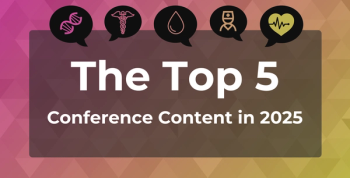
CSPG4 Could Make CAR T-Cell Therapy a Reality in Treating Glioblastoma
Researchers have identified a molecular target that could allow chimeric antigen receptor (CAR) T-cell therapy to be used in treating patients with glioblastoma. Although the heterogeneous expression of tumor-associated antigens limits the efficacy for CAR-redirected T cells for the treatment of glioblastoma, chondroitin sulfate proteoglycan 4 (CSPG4), a cell surface type 1 transmembrane protein, is highly expressed in a majority of glioblastoma specimens with limited heterogeneity.
Researchers have identified a molecular target that could allow chimeric antigen receptor (CAR) T-cell therapy to be used in treating patients with glioblastoma. Although the heterogeneous expression of tumor-associated antigens limits the efficacy for CAR-redirected T cells for the treatment of glioblastoma, chondroitin sulfate proteoglycan 4 (CSPG4), a cell surface type 1 transmembrane protein, is highly expressed in a majority of glioblastoma specimens with limited heterogeneity.
“We identified a target that is highly expressed in glioblastoma,"
In a research article
The researchers then sought to test the activity of CAR T cells targeting CSPG4 in animal models. In order to establish these models, the researchers used glioblastoma-derived cells grown in vitro as neurospheres. Blood obtained from a blood bank was used to generate CAR T cells to evaluate the susceptibility of the glioblastoma neurospheres to CSPG4-mediated targeting.
By day 7 of culture, CSPG4.CAR was detectable in 75% (± 9.1%) of CD3-positive T cells, and CSPG4.CAR T cells co-cultured with glioblastoma neurospheres at effector-to-target ratios ranging from 1:5 to 2:5 efficiently eliminated CSPG4 by day 3 of co-culture. By contrast, glioblastoma neurospheres continued to grow in the presence of control T cells.
CSPG4.CAR-T cells also controlled tumor growth; mice implanted with glioblastoma neurospheres, followed by intracranially injected CSPG4.CAR-T cells 2 weeks later, had improved survival, with 6 of 10 mice remaining tumor free up to day 180. By contrast, among mice who were implanted with glioblastoma neurospheres followed by control T cells, 4 of 10 required euthanasia after developing tumors by day 180.
The researchers concluded that these data support the potential of achieving clinical benefits by using CAR T cells in patients with glioblastoma and highlight CSPG4 as an attractive target for immunotherapy in this indication. Although a combination of CAR T cells targeting multiple antigens will likely be necessary for successful tumor eradication in patients with glioblastoma, say the authors, these data suggest that targeting CSPG4 on its own appears to be beneficial and that CSPG4 should be included in treatment combinations.
Reference
Pellegatta S, Savoldo B, Di Ianni N, et al. Constitutive and TNFa-inducible expression of chondroitin sulfate proteoglycan 4 in glioblastoma and neurospheres: implications for CAR-T cell therapy [published online February 28, 2018]. Sci Transl Med. doi: 10.1126/scitranslmed.aao2731. Accessed March 2, 2018.
Newsletter
Stay ahead of policy, cost, and value—subscribe to AJMC for expert insights at the intersection of clinical care and health economics.









































